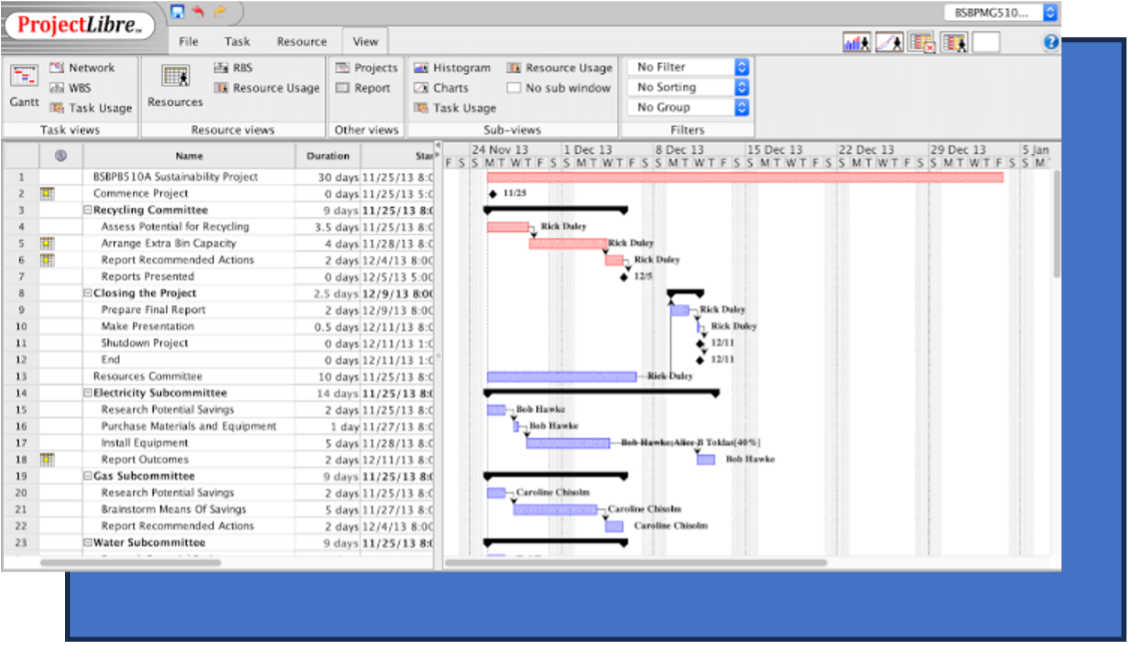  
|
Posted By SDA Headquarters,
Friday, April 26, 2024
Updated: Friday, April 26, 2024
|

April 24 was National Administrative Professionals Day. And this year, we’re taking a different approach. At SDA, we’re celebrating how business professionals in the A|E industry with roles in marketing, finance, human resources, project management, and operations keep the firm in business. Instead of spotlighting individual achievements, we’re diving into the collective essence of our firms, celebrating the interconnectedness of diverse business functions that underpin design endeavors. Much like the celebrated Architecture and Engineering Weeks, let’s delve deeper all week into the intricate business ecosystem of our firms. Today's focus is Human Resources.
In the fiercely competitive landscape of the Architecture, Engineering, and Construction (A|E|C) industry, the battle for talent rages on. As firms strive to attract and retain top-tier professionals, the role of human resources (HR) professionals becomes increasingly pivotal in shaping organizational success.
At the heart of HR’s mission is creating a dynamic and engaging workplace culture that sets firms apart as desirable destinations for experienced and talented professionals seeking growth and fulfillment. From designing effective onboarding systems to implementing robust career development programs, HR professionals play a central role in nurturing employee engagement and professional advancement.
Crafting compelling job descriptions is just the tip of the iceberg. HR teams leverage their expertise to attract candidates with the right skills and cultural fit, ensuring that each hire contributes to the firm’s overall success. Through innovative recruitment strategies and competitive compensation packages, HR professionals create an enticing value proposition that resonates with top talent.
But HR’s impact extends far beyond the recruitment process. By understanding the latest HR benefits available to the firm to save money and retain talent, HR managers leverage the firms’ benefit dollars to their maximum effect.
Case in Point: Cutting-edge HR conference speakers bring our members the latest 401(k) plans, health plans, and compensation trends. Many A|E|C HR managers learned about HDHP health insurance programs and HSA spending accounts early, saving their firms considerable payroll taxes by structuring health insurance premiums as pre-FICA tax deductions.
At SDA, we understand the vital importance of HR in driving talent acquisition and professional growth. That’s why we’ve established initiatives within our SDA network, including our virtual First Friday Coffee Connections and many Focus Area Forums. These platforms are invaluable member resources for sharing knowledge, exchanging best practices, and fostering collaboration within the A|E|C community.
Case in Point: Spreading the word about pursuing the Paycheck Protection Program (PPP) and Employee Retention Credit (ERC) made a real monetary difference to the bottom line while weathering COVID for many firms.
HR professionals can be the unsung heroes of the A|E|C industry, establishing best practices to drive talent acquisition and retention while favoring the firm’s bottom line. Through their expertise, dedication, and innovative initiatives, they create the foundation for organizational success and foster a culture of excellence that propels firms to new heights of achievement.
SDA Webinars:
Join us at our next First Friday Coffee – Register Here
Tags:
Administration Professionals Week
AE Business
AEC Human Resources
AEC Recruiting
SDA National
Permalink
| Comments (2)
|
  
|
Posted By SDA Headquarters,
Wednesday, April 24, 2024
Updated: Wednesday, April 24, 2024
|

April 24 is National Administrative Professionals Day. And this year, we’re taking a different approach. At SDA, we’re celebrating how business professionals in the A|E industry with roles in marketing, finance, human resources, project management, and operations keep the firm in business. Instead of spotlighting individual achievements, we’re diving into the collective essence of our firms, celebrating the interconnectedness of diverse business functions that underpin design endeavors. Much like the celebrated Architecture and Engineering Weeks, let’s delve deeper all week into the intricate business ecosystem of our firms. Today's focus is Finance.
Financial management is pivotal in driving success and sustainability in the complex world of architectural and engineering firms. From navigating tax regulations to optimizing project profitability, finance professionals are responsible for fiscal health and strategic decision-making.
One often overlooked aspect of financial management is understanding and mitigating tax liabilities. In Virginia, firms are subject to a Gross Receipts Tax, which can significantly impact the bottom line.
Case in Point: Take, for instance, the scenario of a joint venture operating in Virginia. Not only does the JV incur Gross Receipts Tax, but each partner is also subject to additional taxation at the individual level. A double whammy can eat into profits and erode financial viability. However, astute financial analysis and strategic planning can uncover opportunities for optimization and savings. Consider the case of a recent joint venture where a firm’s controller identified a significant tax-saving opportunity. By strategically headquartering the JV in Colorado instead of Virginia, the venture saved $13,000 annually and $65,000 over the contract’s life. This simple yet strategic decision increased the JV’s profit dollar for dollar to the bottom line.
But tax optimization is just one piece of the puzzle. Equally important is understanding project profitability by client—a metric that can reveal hidden inefficiencies and identify lucrative opportunities. By analyzing profitability metrics, firms can weed out underperforming projects, allocate resources more efficiently, and prioritize clients with the highest returns.
At SDA, we’re committed to empowering our members with the knowledge and insights needed to navigate the intricate terrain of financial management. It’s one reason why we partner with industry leaders such as PSMJ, Profit by Design, and Morrissey Goodale during our conferences. Through these partnerships, we provide our members access to up-to-date financial analysis, industry trends, and best practices—like Deltek & A|E Clarity’s financial survey and McGraw-Hill industry trends—equipping them with the tools and strategies needed to thrive in a competitive marketplace.
Case in Point: After a member attended an SDA conference session by Mony Financial Services on deferred compensation plans using whole life insurance, she brought the idea back to her firm, the firm established and funded the plan, and it continues to be a successful part of the firm’s succession planning.
Finance is the lifeblood of A|E firms, driving strategic decision-making and ensuring long-term sustainability. By embracing financial acumen and leveraging our various member resources, firms can unlock new opportunities, optimize profitability, and chart a course toward continued success in the industry’s ever-evolving landscape.
Look for SDA’s new Certificate in Design Firm Financial Management (CDFO-FM) accreditation coming soon. CPAs and CMAs designations are helpful, but an accreditation specific to A|E|C finances will be a game changer.
Webinar Suggestions:
Benchmark Your Firm Performance for Growth – Deborah Gill
RAISE Your Value and Charge What You’re Worth– June Jewell
How to Achieve a Sustainable, Profitable Business - Mark Goodale
Tags:
Administrative Professionals Day
AE Business
AE Finance
AEC Business
AEC Learning
APW24
SDA National
Permalink
| Comments (1)
|
  
|
Posted By SDA Headquarters,
Monday, April 22, 2024
Updated: Monday, April 22, 2024
|

April 24 is National Administrative Professionals Day. And this year, we’re taking a different approach. At SDA, we’re celebrating how business professionals in the A|E industry with roles in marketing, finance, human resources, project management, and operations keep the firm in business. Instead of spotlighting individual achievements, we’re diving into the collective essence of our firms, celebrating the interconnectedness of diverse business functions that underpin design endeavors. Much like the celebrated Architecture and Engineering Weeks, let’s delve deeper all week into the intricate business ecosystem of our firms. Today's focus is Project Management.
Effective project management is the linchpin for success in the dynamic world of Architecture, Engineering, and Construction (A|E|C) projects. Three factors are pivotal in ensuring the firm completes projects on time, within budget, and to the highest quality standards.
• Schedules
• Resource allocation
• Documentation and Reporting
Even before starting the project, the project team needs to set the project up with the most favorable contract terms, including insurance terms, billing and progress payment schedules, change orders, contingencies, and the overall risk management structure. The Project Management Assistant’s knowledge of contract administration aids the team in starting off with the best possible terms.

Establishing schedules, allocating resources, and project budgeting lie at the core of project management. However, once accomplished, the day-to-day administration of those tasks is not the PM’s first choice in priorities. Here is where PMAs excel. Once the PM develops the detailed project timelines and milestones, PMAs manage the daily tasks, time-keeping, meeting management, and reporting, ensuring that every aspect of the project progresses smoothly and efficiently for the PM. And the PMA turns all of that information into billable dollars, preparing and sending client invoices.
 Resource scheduling is another critical aspect of project management, ensuring that the right resources are allocated to the right tasks at the right time and billed to the correct project and phase. By optimizing resource utilization software and minimizing downtime, PMAs maximize efficiency and productivity, driving the project toward its ultimate goals with precision and effectiveness. Overseeing the team’s time and expense management through software, documentation, and organization, the PMA maximizes timely billing and profitability. Resource scheduling is another critical aspect of project management, ensuring that the right resources are allocated to the right tasks at the right time and billed to the correct project and phase. By optimizing resource utilization software and minimizing downtime, PMAs maximize efficiency and productivity, driving the project toward its ultimate goals with precision and effectiveness. Overseeing the team’s time and expense management through software, documentation, and organization, the PMA maximizes timely billing and profitability.
Comprehensive documentation is equally essential in project management. From meeting minutes to change orders, PMAs work with project managers to meticulously record every aspect of the project’s progression, providing a clear and transparent record of decisions, actions, and outcomes. This documentation is a valuable reference for the project team and provides a crucial line of defense for disputes or claims.
In our organization, we understand the importance of equipping PMAs with the tools and resources they need to excel in their roles. In 2023, SDA conducted an 8-hour project management workshop facilitated by project, financial, and risk management experts and provided a PM toolkit for future reference. Our SDA website offers a wealth of resources, with e-books, examples, and checklists, including the perfect liability clause and the use of Betterment as a defense in Errors and Omissions (E+O) negotiations to reduce pay-outs. These resources provide valuable insights and strategies to help PMAs administer daily tasks, permitting project managers to navigate complex challenges and mitigate risks effectively. Project Management is one of the six keystones of our Certificate in Design Firm Administration. toolkit for future reference. Our SDA website offers a wealth of resources, with e-books, examples, and checklists, including the perfect liability clause and the use of Betterment as a defense in Errors and Omissions (E+O) negotiations to reduce pay-outs. These resources provide valuable insights and strategies to help PMAs administer daily tasks, permitting project managers to navigate complex challenges and mitigate risks effectively. Project Management is one of the six keystones of our Certificate in Design Firm Administration.
By embracing best practices in scheduling, resource allocation, and documentation, PMAs empower their teams to deliver exceptional results and achieve excellence in every endeavor.
For more information, check out these resources:
SDA Recorded Webinars
SDA Innovation in Education Resources
Tags:
Administration Professionals
Administrative Professionals Week
AE Business
AEC Business
AEC Project Management
APW24
Project Management
SDA
SDA National
Permalink
| Comments (8)
|
|